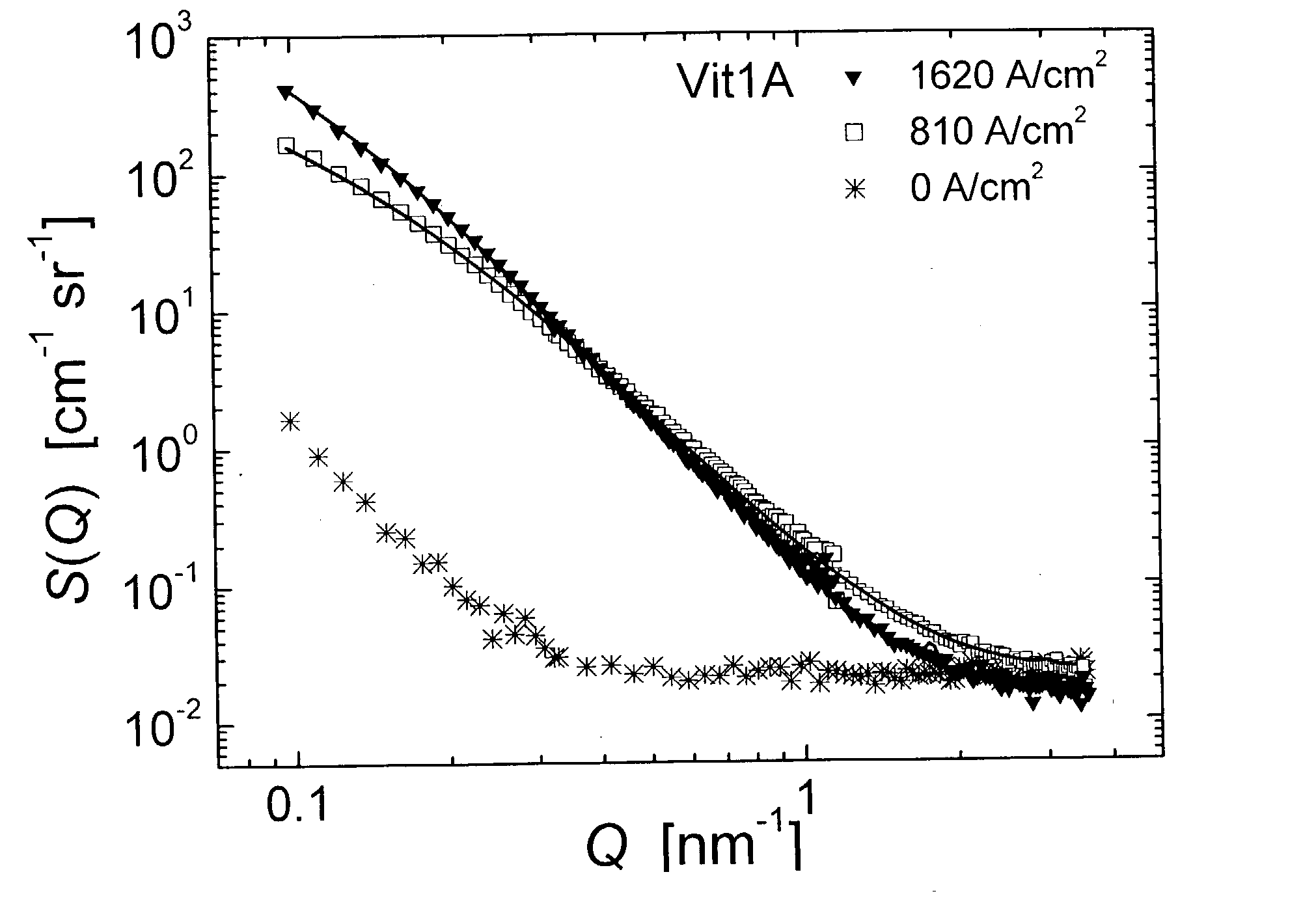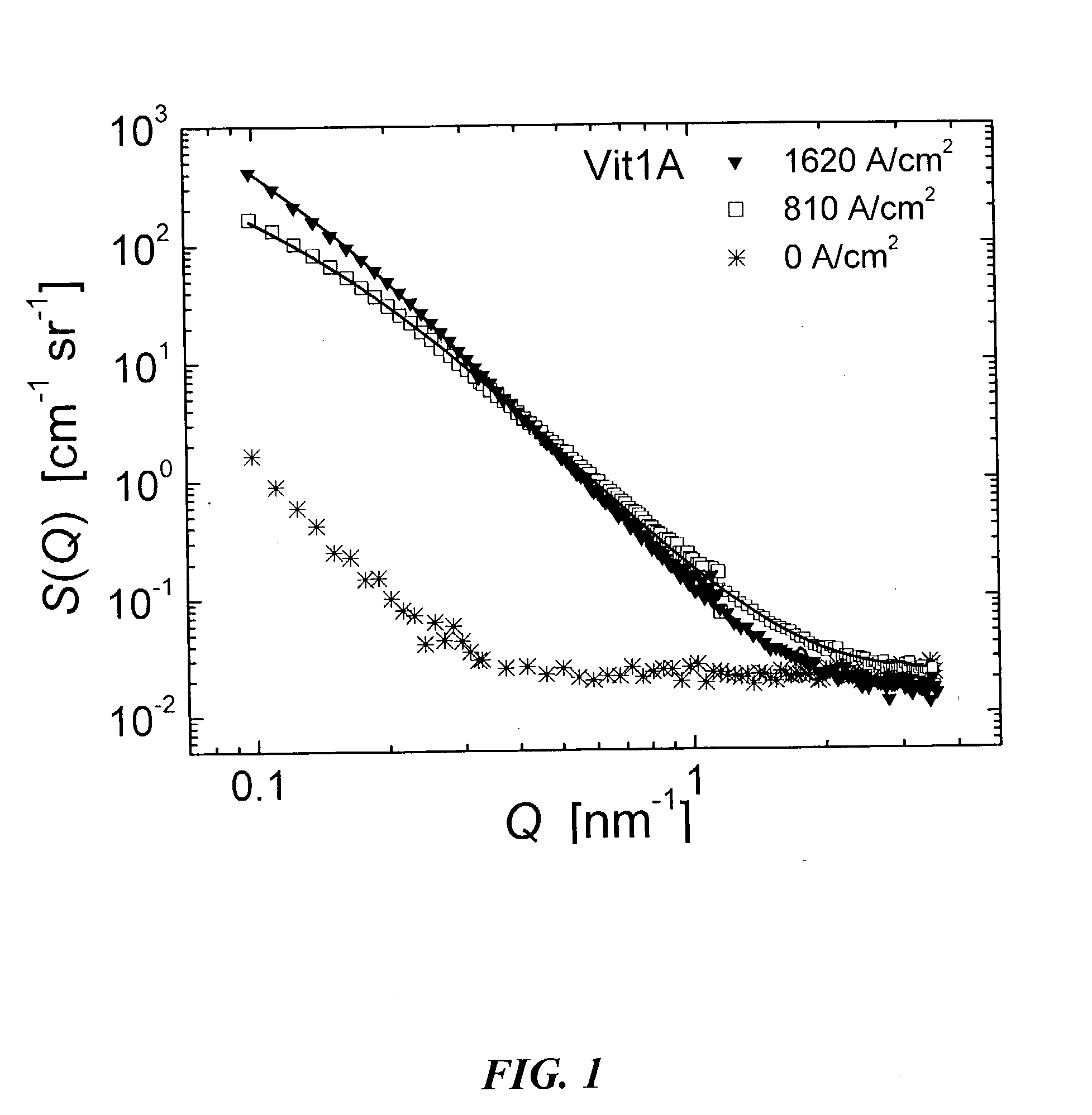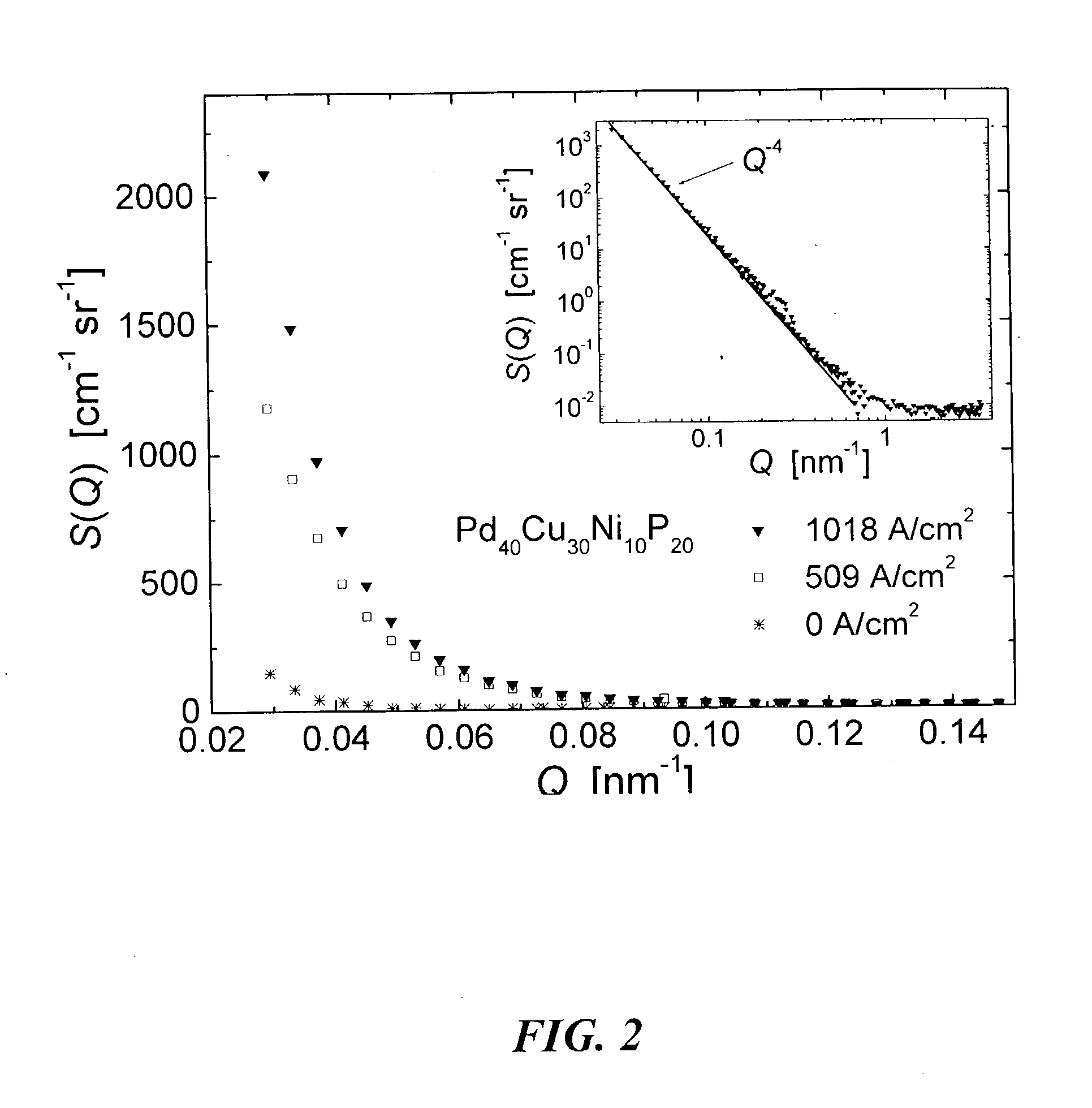Metallic glasses with crystalline dispersions formed by electric currents
- Summary
- Abstract
- Description
- Claims
- Application Information
AI Technical Summary
Benefits of technology
Problems solved by technology
Method used
Image
Examples
examples
[0042] The following experiments illustrate the use of a DC current to form crystallites in two metallic glasses. One of the glasses had the empirical formula Zr42.6Ti12.4Cu11.25Ni10Be23.75, has a critical cooling rate of 1 K / s, a glass transition temperature of 628 K (355° C.) at a heating rate of 10 K / min, and a AT (the difference between the crystallization temperature and the glass transition temperature) of about 97 K, and is a glass known to undergo decomposition (phase change) before crystallization. The other glass had the empirical formula Pd40Cu30Ni10P20 (referred to hereinafter as “PCNP”), has a critical cooling rate of less than 1 K / s, a glass transition temperature of 582 K (309° C.) at a heating rate of 10 K / min, and a AT of about 88 K, and is believed to crystallize by classical nucleation and growth, i.e. without decomposition. The Zr-based glass was a product obtained from Howmet Research Corporation (Whitehall, Mich., USA) and identified by the product name Vit1A. ...
PUM
| Property | Measurement | Unit |
|---|---|---|
| Temperature | aaaaa | aaaaa |
| Time | aaaaa | aaaaa |
| Time | aaaaa | aaaaa |
Abstract
Description
Claims
Application Information
 Login to View More
Login to View More - R&D
- Intellectual Property
- Life Sciences
- Materials
- Tech Scout
- Unparalleled Data Quality
- Higher Quality Content
- 60% Fewer Hallucinations
Browse by: Latest US Patents, China's latest patents, Technical Efficacy Thesaurus, Application Domain, Technology Topic, Popular Technical Reports.
© 2025 PatSnap. All rights reserved.Legal|Privacy policy|Modern Slavery Act Transparency Statement|Sitemap|About US| Contact US: help@patsnap.com



